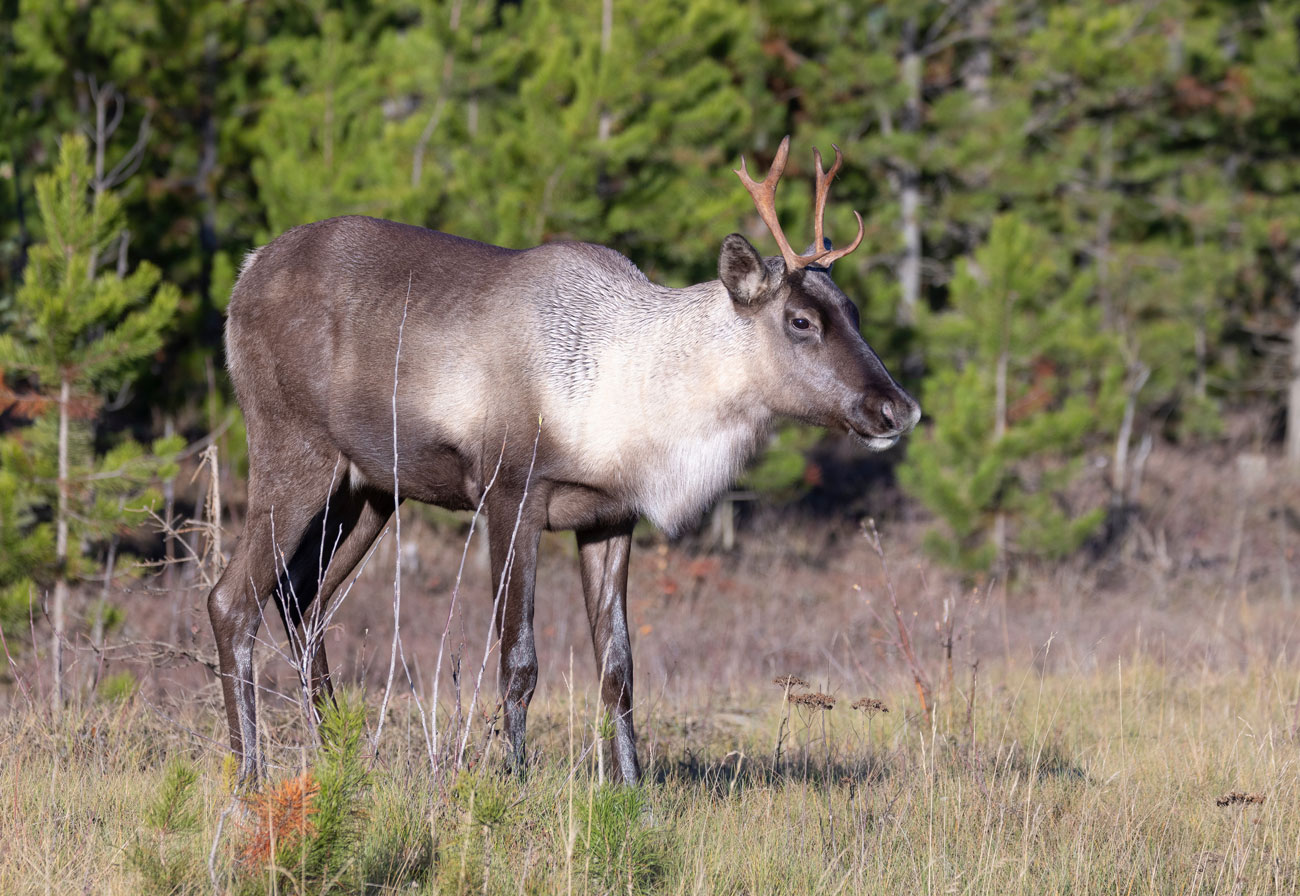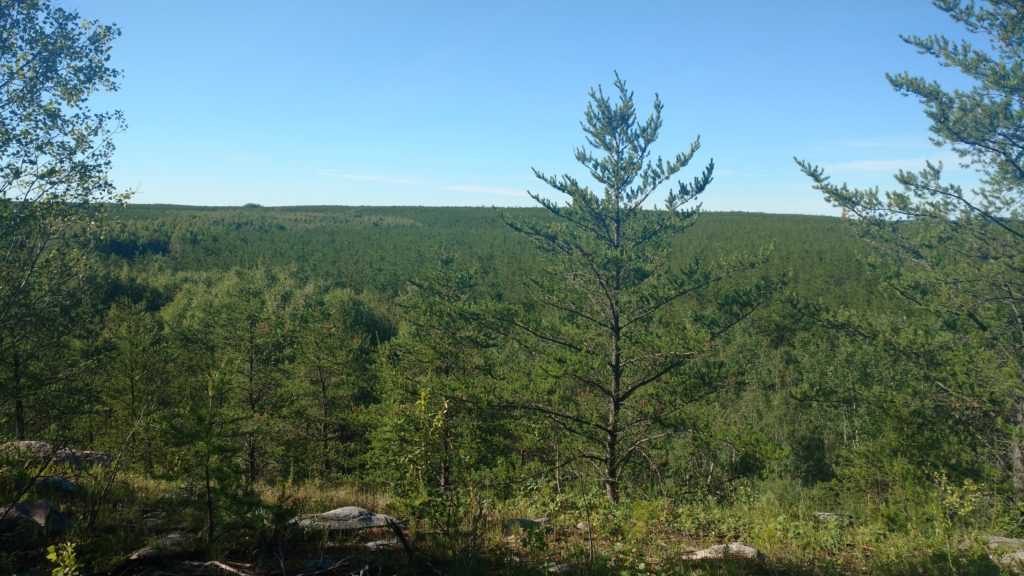Caribou as Unsung Heroes: an Indicator and an Umbrella Species

By Caitlyn Anhorn
Woodland caribou are a highly important species that often do not get the credit that they deserve. They are the face of the Canadian quarter, but often get mistaken for moose or elk.
Requiring large and old-growth habitat, their population provides insight into the health of the overall ecosystem. They are an umbrella and an indicator species within the Canadian boreal forest that need protection! Protection is key because although boreal Woodland caribou have been listed as threatened on the Species at Risk Act since 2003, their numbers continue to decline.
CPAWS-SK pays close attention to Saskatchewan’s progress towards protecting Woodland caribou. We monitor governments and industry and do what we can to hold them accountable to agreements made.
After all, the agreements are in place for the health of the caribou populations and their habitats, which are also critical for countless other terrestrial species.
As mentioned above, Woodland caribou are both an umbrella and an indicator species. Are they a Keystone species? What do these terms mean? What are some other local examples? What is the role of these species for conservation? Keep reading to find out.

What is an Umbrella Species?
An umbrella species is a species whose wellbeing and population numbers are suggestive of the entire ecosystem’s health. This is because they need specific habitat conditions to support their populations.1 Oftentimes, the conditions need to be healthy or pristine, which are also needed by many other species.
An umbrella species is tied to its specific geographic range: the area where a species naturally lives and is found.1 Umbrella species tell the tale about the health of the ecosystem. For example, should a species population severely decline, it is likely that the ecosystem’s overall health is declining in the area.
Woodland caribou are one example of an umbrella species because they have specific habitat and food requirements. They need large sections of unaltered forest to avoid predators and for calving, resting, and feeding. In a nutshell, the boreal forest ecosystem is under the same ‘umbrella’ as the Woodland caribou’s habitat.
Umbrella species role in conservation
Protecting the large home range and habitat needs of umbrella species is important because many other species are simultaneously protected under the same ‘umbrella’ through these efforts. Protecting an umbrella species could mean protecting an entire ecosystem and all its members.
What is another umbrella species that live in the west?
Grizzly bears are an umbrella species in Alberta because they require a large home range. Protecting grizzly bears also protects other species within their range.
What is an Indicator Species?
Indicator species are easily impacted by slight changes to the ecosystem within their habitat. If their wellbeing decreases, it is often a good ‘indicator’ that the health of the ecosystem is deteriorating.1
Woodland caribou are one example of an indicator species because they are picky about their habitat, requiring intact old-growth forests to sustain their populations. The wellbeing of caribou populations can indicate the wellbeing of the forest ecosystem. Woodland caribou populations are threatened, indicating that the health of the boreal forest is also declining.
Protecting umbrella species enables the protection of all species within that specific range. Indicator species provide early clues that the ecosystem is struggling because they are easily impacted by slight changes.
What is another indicator species in Saskatchewan?
Wolverines are another indicator species in Saskatchewan.2 They require large and intact ecosystems and are significantly impacted by slight habitat disruption.



Are Woodland Caribou a Keystone Species?
An ecological keystone species has a disproportionate impact on an ecosystem. There may not be that many individuals of the species, but they have a large impact, nonetheless. If a keystone species disappears, the ecosystem’s diversity or function may plummet; the importance of keystone species for the ecosystem is often noticed once they are gone.
Examples of keystone species in Saskatchewan include prairie dogs, bees, beavers, bison and wolves, just to name a few.
If wolves were to disappear, there would be a ‘trophic cascade’, where species in all levels of the food web would be impacted by their removal. There would be an increase in large ungulates like deer or elk because there would be fewer predators. These ungulates would then over-graze young trees and impact other species in the ecosystem that also rely on the trees. Thus, wolves are a keystone species, whose presence and absence both have a large impact on the ecosystem and its food web.
Now, to answer the question, no, Woodland caribou are not an ecological keystone species. Woodland caribou do not have a disproportionate impact on the ecosystem, but rather, their habitat requirements fall under the same umbrella as other species and their population health is one indicator of the ecosystem’s health.
Are they a cultural keystone species?
Due to the incredible importance of caribou to Indigenous peoples, they are a cultural keystone species. Many Indigenous nations have very intricate historical and ongoing connections to the land and animals around them. Read more about cultural keystone species here.
To read more about various types of keystone species, click here.
Keep reading here:
(1) Role of Keystone Species in an Ecosystem – National Geographic
(2) Wolverine Status Assessment – SK Conservation Data Center
Diversity is Key to Resilient Ecosystems – CPAWS
Woodland Caribou – CPAWS Saskatchewan, CPAWS Manitoba
Canada’s Woodland Caribou at a Conservation Crossroad – PEW Charitable Trusts
